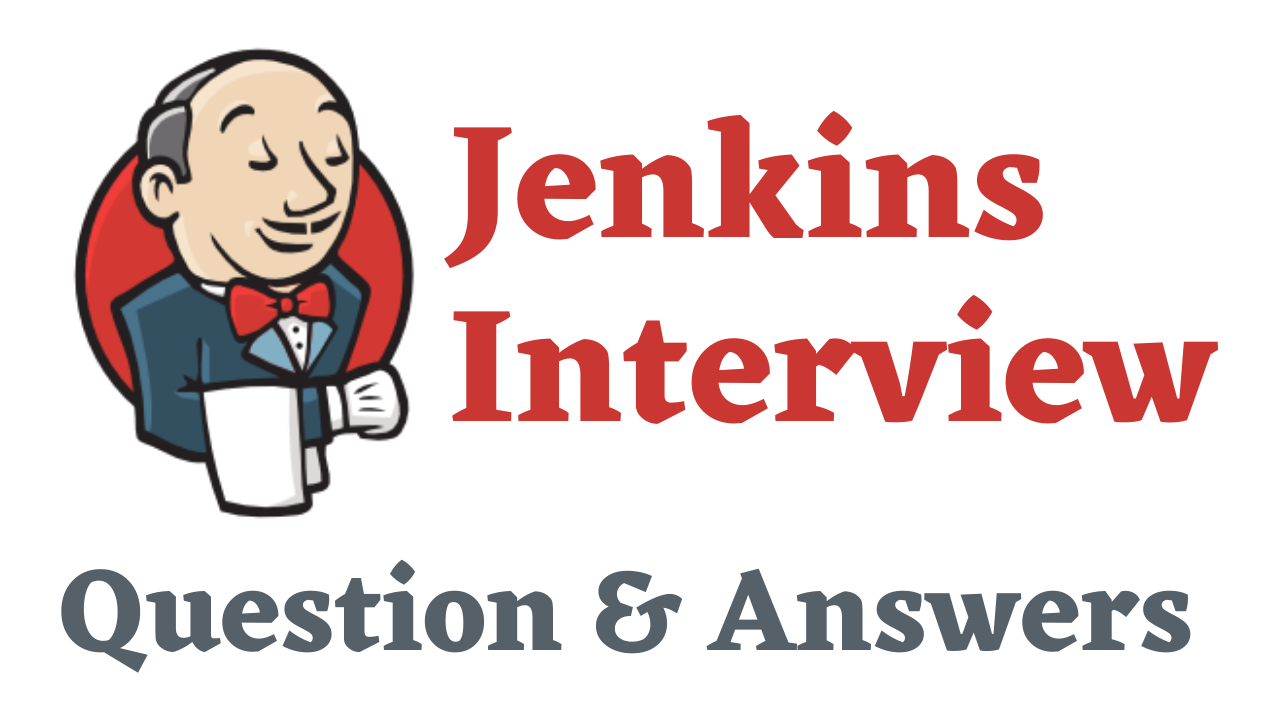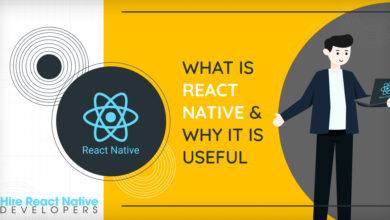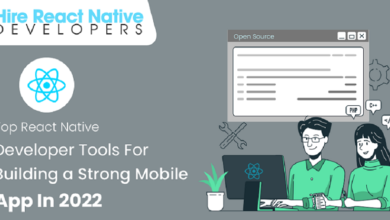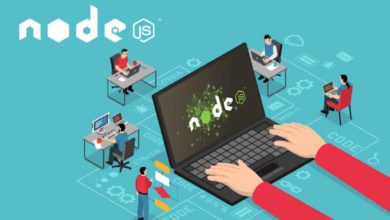In today’s world where our everyday activities are closely intertwined with a wide array of apps, we often imagine what does a software developer do? software developers to be these tech wizards, weaving magic in their cyberdom to create these mind-boggling applications which make our lives easier. Be it telling us about the prevailing weather conditions or helping us shop while lazing in our couches, apps and their multifaceted functionalities have empowered us to perform all the necessary tasks at a mere touch of a tab on our phone screens.
Sometimes one can’t help wonder, how do the brains behind these feats actually work, and for many of us uninitiated it seems like a wondrous space of software and machines and whatnot. While software and codes are the fulcrum upon which development rests, the process may not be all that enchanting. Rather, with the availability of the right tools it is pretty methodical.
Effectively, the life of a software developer revolves around the cyclical pattern of develop, test and deploy. For a smooth user experience of an application, the main challenge confronting the developers is flawless automation, otherwise, the cycle of development, testing, and deployment will become regressive and will substantially damage the applicability and the apps that we all depend so much on will lose much more than their oomph.
Jenkins Interview Questions & Answers
1. What is the contemporary relevance of Jenkins today?
When it comes to ensuring the smooth deployment and maintenance of apps, it is imperative to have a system of automation in place so that the user interface is as dynamic and intuitive as possible. In these days of cutting edge technology, there’s always new innovations mushrooming up to meet one or the other user’s needs, servers need to be able to facilitate hassle-free integration and continuous automation. This is where Jenkins features as a Godsent.
Jenkins is one such continuous integration tool that helps prompt testing and running of new code on non-developer machines and helps in building robust automation. For all Java and Linux developers, Jenkins ushers in a whole flurry of advantages. Be it easy customization or swift integration, thorough testing, or even wider code coverage, Jenkins largely enhances both the development and operations process.
It is hardly surprising then that Jenkins has enjoyed extensive applicability in the current context, across different domains, even big names like Facebook and eBay. Parallelly, developers with a flair for and a command over Jenkins are in high demand in the employment market. Especially when the larger industrial trend is calibrated towards digitization, developers who are able to bring in automation and dynamic deployment will be valued greatly by any enterprise.
The career prospects, as well as the potential for expansion of the field, have appealed to a lot of developers and increasingly coders are wrapping their heads around Jenkins. Easy to learn and easy to deploy, Jenkins is an open source platform so accessibility and usability are highly expansive as well.
Portraying a steady demand on the employers’ side as well as being a popular subject matter among the budding programmers, Jenkins is often a make or break topic in most interviews.
2. What is Jenkins continuous integration?
Continuous integration is a process of integrating the program codes within the application promptly and facilitating simultaneous testing so that errors in the code can be identified and rectified at the earliest. Jenkins is one such open source tool for continuous integration that enables developers to consistently deploy and test their codes in the context of a production simulated environment.Jenkins’ feature of continuous testing allows the developers to schedule the tests of the codes according to their own convenience and get feedback on those tests at the earliest. It also eases out manual intervention. Thus while developers are aware of every step of the deployment process, they need not babysit the codes the whole time.
3. Does Jenkins have any prerequisites?
While it offers a whole range of benefits, using Jenkins is not complicated at all. Nor does it entail any extensive prerequisites. For using Jenkins there are primarily two straightforward requirements. One, is a repository for source code that must be accessible. Git repository is a popular source code repository. Secondly, it is essential to have a working build script that must be checked into the source code repository. Maven script is a once such working build script.
4. Why choose Jenkins for continuous integration?
The popularity of Jenkins can be attributed to a plethora of factors. Some of the benefits have to do with the user experience while others have direct bearings on the development process. To begin with, Jenkins is an open source tool that translates as easy to access and easy to integrate. It also follows a simple process of installation.
One of the key advantages of Jenkins is that it comprises over 1000 plug-ins which largely widens its community support base. Given that Jenkins is a Java-based tool, it is compatible with most platforms so it often becomes the first choice for the developers. The icing on the cake is of course, that it is all free of cost. On the technical side of things, there are some major advantages to using Jenkins as a continuous integration tool.
Due to its property of consistent testing, build errors are cached at the integration level.
Jenkins assists the developers to keep tabs on every level of the deployment process so much so that every time there is a change in the source code, an automatic build report notification is generated.
Jenkins is usually integrated with the LDAP mail server which enables the developers to be notified in real time about the success or failure of the build server reports.
Jenkins promotes an agile development environment wherein continuous integration and testing is made possible.
Jenkins not only facilitates easy automation of maven build scripts but also smoothens the troubleshooting process by detecting errors and bugs at the initial stage.
5. What is the process of installing Jenkins?
Here again, as an open source tool, Jenkins is available to one and all. Moreover, since the codes are mostly in Java, it can run on most machines. One needs to follow a simple five-step process in order to install Jenkins.
Firstly, one needs to install Java since Jenkins is a Java-based tool. Preferably, Java version 8 must be installed for better performance.
The second step for Jenkins installation is installing Tomcat, ideally version 9. Without Tomcat, the Jenkins war file can’t run so this is an important step.
Thereon, one must download the Jenkins war file. Once the war file has been installed, users can use Tomcat to deploy the Jenkins war file.
Computer Vision with Successful Applications in Healthcare, Retail and MoreJenkins brings with it a whole range of plug-ins,the user may choose to install the relevant plug-ins. Once this step is completed, the user will be directed to the Jenkins dashboard and that is where the joyride starts from.
6. What are some of the popular plug-ins available with Jenkins?
One of the most well appreciated features of Jenkins is the large variety and volume of plug-ins that are available with Jenkins. Jenkins offers over 1000 plug-ins which enhances the scope of customization for different kinds of developers. Among the most sought after plug-ins, the following plug-ins may be included, namely Green Balls, Join, Amazon EC2, Copy Artifact, Maven 2 Project, and of course, Git. This is in no way an exhaustive list. There are several other plug-ins that users may explore with Jenkins.
7. Describe in brief the overview of Jenkins deployment.
While deploying code with Jenkins makes the process enormously efficient, it is important to strategically follow the steps of deployment for better results.
The first step for the developer is to commit the program code to a given source code repository. Once the code has been committed, Jenkins keeps a tab on all the changes and the server keeps checking the repository to take note of any changes. The minute a change is noted, the Jenkins server starts preparing a fresh build. Jenkins simultaneously tests the build as it keeps building.
If an error occurs due to which the build fails, the developer is notified immediately. However, if it is successful, then the code is deployed in a test server which simulates the production environment. Once the test is complete, then the feedback is generated and the notification of the same is received. The entire process is repeated on automation till the entire source code is covered. Once this step is completed, the application code is finally deployed in the production server.
We see the scale of automation that Jenkins brings into the entire deployment process. It also keeps the developer in loop, hence negating the chances of bugs.
8. What is the difference between Bamboo, Hudson and Jenkins?
At the very outset, Hudson and Jenkins are essentially the same tools where Hudson predated Jenkins and was later remodeled into Jenkins with updated versions.
When it comes to Bamboo and Jenkins, there are prominent points of differences with pros scaling more towards Jenkins. Firstly, unlike Bamboo, Jenkins is an open source tool. Secondly, while Jenkins is free of cost, Bamboo usually levies a certain amount depending upon the number of builds that the developers avail of. From Ubuntu to Mac OS, Jenkins is compatible with a wide range of operating systems while Bamboo is limited to only Windows, Linux and Solaris.
When it comes to browsers, both may be accessed through any of the prominent browsers. While Jenkins supports over 1000 plug-ins, Bamboo has a limited number of plug-ins available. Additionally, as a direct consequence of being an open source tool, Jenkins enjoys a wide community support in comparison to that of Bamboo.
9. What are the two components that Jenkins is mainly integrated with?
Jenkins is mainly integrated with two components. These include version systems and build tools. While Git and SVN are examples of the former, Apache Maven is an example of the latter.
10. What do you mean by Maven?
As explained in the last question, Maven refers to a build management tool. It is equipped to configure all the dependencies that are mandatory for building, testing, and running codes. Integrating Jenkins with Maven ushers in several advantages. These include that Maven can manage the entire lifecycle of a test project and relieves the developers of any additional headache. As a webdriver, Maven builds and tests the project with the utmost efficiency.
11. What is meant by a post in Jenkins?
Jenkins ensures the smooth functioning of the code even after the pipeline is finished. This is accomplished through the steps called posts. Conditions like changed success, always, aborted, failure and unstable, determines the status of the pipeline. Upon completion of the pipeline, posts can execute a set of additional steps.
12. What is the job of parameters?
Pipelines also play a vital role in the execution of pipelines in Jenkins. They are usually associated with the Agent section of Jenkins and they support different use-case pipelines. Parameters are typically defined either at the top level or at the individual stage directives.
13. Describe Groovy in Jenkins.
Groovy is one of the scripting languages included in the Java platform. Groovy is used as the native scripting language for Jenkins. Groovy facilitates dynamic and consistent interfaces with Jenkins.
14. How can one create backup and copy files in Jenkins?
Jenkins enables you to backup all your codes that have been committed to the source code repository. For creating a backup, the one stop destination in Jenkins is the Jenkins Home Directory. It consists of build job configurations, slave node configurations as well as the build history.
So one must periodically back up the Jenkins Home Directory in order to keep a backup of all the codes. In case one wishes to backup the Jenkins setup, simply copying the Jenkins home Directory will suffice. One also has the option to copy the directory in order to clone or replicate a job.
15. Is Jenkins compatible with a cloud computing environment?
Cloud computing services largely depend on automation in order to receive feedback promptly and serve their customers better. For this purpose they mostly use CD/CI models. It is Jenkins which enables the automation of the CD/CI pipelines. Azure Web Services, Amazon EC2 commonly depend upon Jenkins plug-ins for automation. So, in many ways Jenkins and Cloud computing environments are hand and gloves.
16. How are automated tests run on Jenkins?
Automated tests are usually run on build systems like Apache Maven or Selenium. The salient feature of Jenkins is that developers can schedule the automated tests according to their own convenience. Jenkins will run the test according to the set time on the build systems and generate reports. So, even if you have a project launch scheduled on Friday night, you no longer have to cancel your plans. Let Jenkins do the needful while you enjoy yourself.
17. What kind of Job projects can be done with Jenkins?
Jenkins lets developers work on a variety of jobs or projects ranging from freestyle projects to Git hub organization. This is an evolving field.
Wrapping up
These mainly cover a little over the basic knowledge of Jenkins that are meant to equip one for an interview. While not an exhaustive list, it lays the foundation for wooing the recruiters with your knowledge of Jenkins.
If you’re interested to learn more about Jenkins, full stack software , check out upGrad & IIIT-B’s PG Diploma in Full-stack Software Development which is designed for working professionals and offers 500+ hours of rigorous training, 9+ projects, and assignments, IIIT-B Alumni status, practical hands-on capstone projects & job assistance with top firms.

 The Transformation of Trading: The Ascendancy of Investxm and Counterparts in Today’s Market
The Transformation of Trading: The Ascendancy of Investxm and Counterparts in Today’s Market Current Licensing and Trading Regulations
Current Licensing and Trading Regulations Reasons Why You Should Invest In Magento
Reasons Why You Should Invest In Magento What is React Native and why it is Useful?
What is React Native and why it is Useful? Top React Native Developer Tools for Building a Strong Mobile App in 2022
Top React Native Developer Tools for Building a Strong Mobile App in 2022 How NodeJS Is Manipulating Website App Development?
How NodeJS Is Manipulating Website App Development? Windows Shared Hosting – Offers All Of The Necessary Tools To Ensure Successful Business Growth
Windows Shared Hosting – Offers All Of The Necessary Tools To Ensure Successful Business Growth Five Essential Tips for Improving Your Website Design
Five Essential Tips for Improving Your Website Design